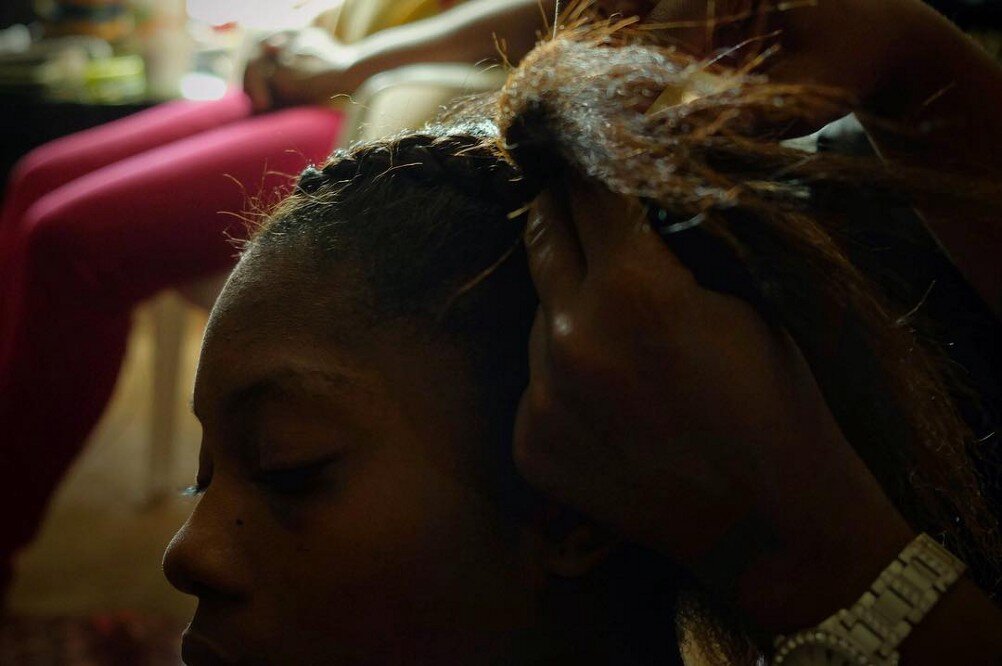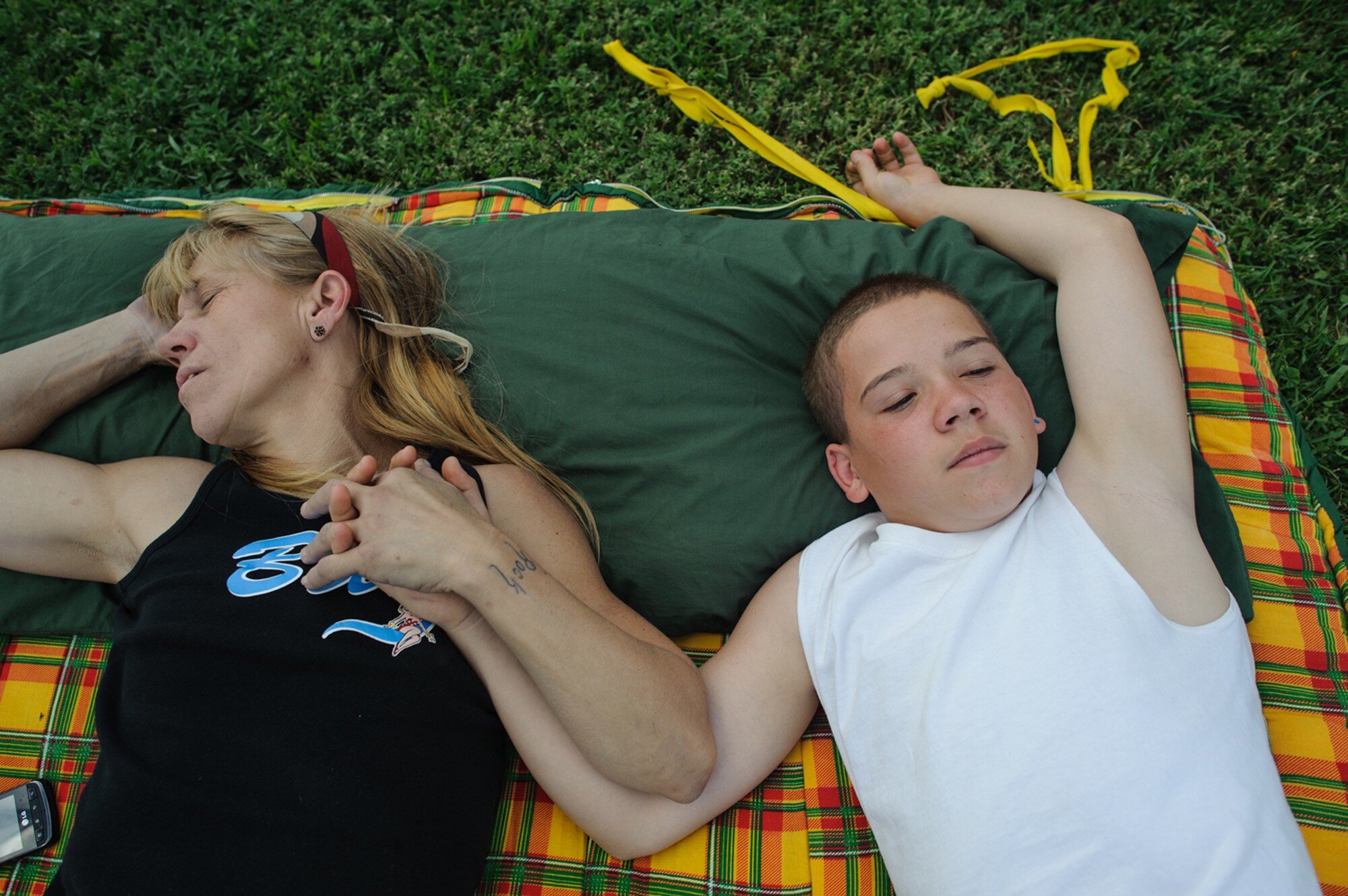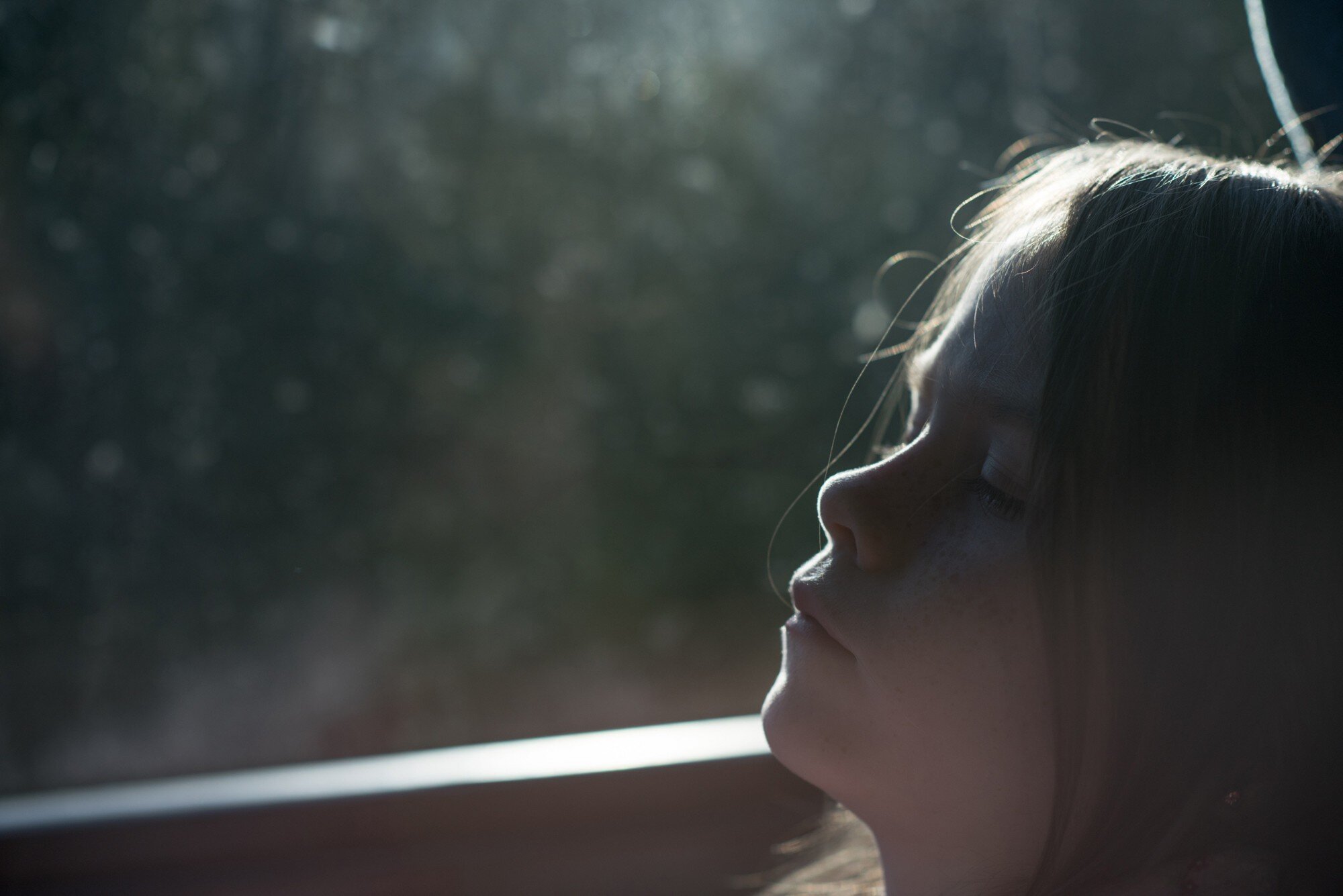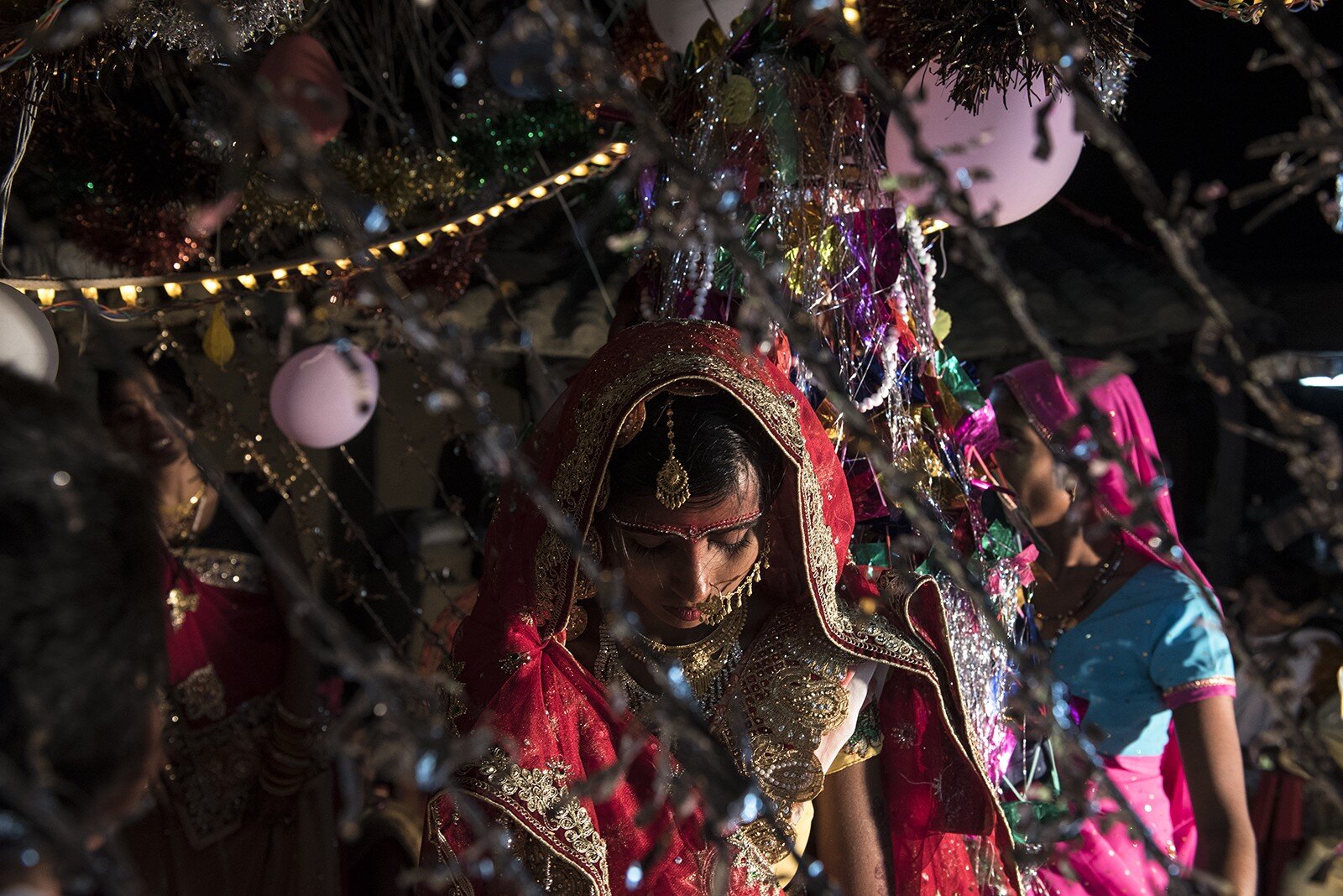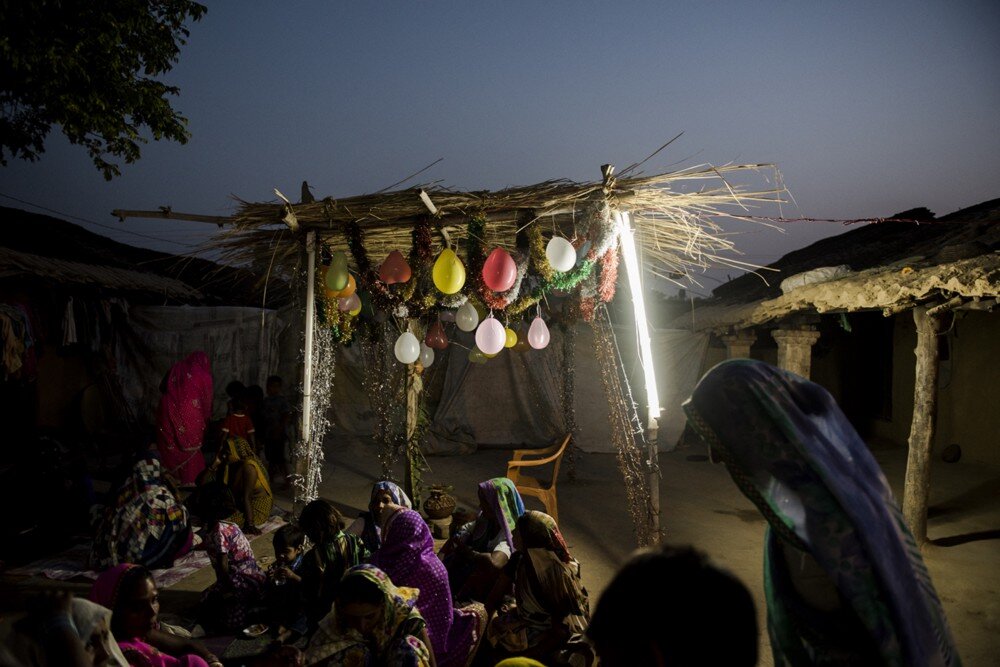In Conversation with the winners of the 2017 Getty Instagram Grant
This year the Getty Instagram Grant was awarded to Nina Robinson, Isadora Kosofsky, and Saumya Khandelwa. The grant awards $10,000 to three emerging talents, who use Instagram to share stories from underrepresented communities. Re-Picture editor Danielle Villasana speaks with each them about their projects, passions, and what’s up next.
Nina Robinson is a documentary photographer and educator based in Arkansas and New York. Robinson’s work is a mixture of her past experiences, bridging documentary photography with fine art. With a strong focus on underrepresented communities, Robinson aims to break the visual prejudices of race, class, age, and gender. Robinson’s work has been exhibited at the Bronx Documentary Center, the Bronx Museum, and Mosaic Templars Cultural Center, a museum dedicated to telling the story of the African American experience in Arkansas. Robinson plans to begin work on a book next year for her project “Not Forgotten: An Arkansas Family Album.” Follow her @NinaRobinsonNYC and @ArkansasFamilyAlbum.
Aunt Jean stands underneath a tree next to grandma’s house, gazing up at the sky, in Dalark, Arkansas. Photograph by Nina Robinson, @ninarobinsonnyc, @arkansasfamilyalbum
Danielle Villasana: How did “Not Forgotten: An Arkansas Family Album” begin?
Nina Robinson: This project was never planned. Three years ago, I set out to tour the south, make portraits of my fellow travelers, and hear their stories. I hadn’t been back to Arkansas in 15 years. My grandmother fell ill and passed away in the first week of my trip. During that time, it felt like I was surrounded by death. Three family members and two friends died, from illness, suicide, and murder in seven short months.
I released my pain in the only way I knew by capturing all of the moments of love, union, family, and sorrow unfolding before my eyes. “Not Forgotten: An Arkansas Family Album” became a way to reconnect with family as well as honor my ancestors.
DV: How did the project allow you to rediscover your family?
Aunt Jean stares off, admiring the view of a small hidden lake in Joan, Arkansas.
Aunt Betty tapes up pages in grandma’s bible in Dalark, Arkansas. It was storming hard the night before, grandma always has her bible open to Luke 8:22–25 during bad weather.
Grandma’s favorite chair sits in the corner of her room, pillow still mushed down, Dalark, Arkansas.
The funeral director helps Rev. Craig remove grandma from aunt Betty’s home, into the back of the hearse. Photographs by Nina Robinson, @ninarobinsonnyc, @arkansasfamilyalbum
NR: It was never about rediscovering. It was always about reconnecting. Reconnecting to a part of my life that I had taken for granted. The more time I spent in Arkansas, with my aunts and cousins, the more rooted I felt. In this freelance photographer career I’ve made many sacrifices, including moving away from my family and starting a completely new life in New York. I’d go a year or two without seeing family members (15 years without seeing my mother’s side of the family). I’m now at a point in my life where I want to make a conscious effort to spend more time with the people I love.
DV: How do you discuss themes of race, identity, and community in your work?
NR: These themes are embedded in my life, in my soul. I don’t separate them in categories. There will never be a day I wake up and do not think about race or identity, I’m a black woman. I live them, therefore my work reflects them and will continue to reflect these themes. Images of the African-American rural south in the photojournalism industry still portray a very narrow view of what blackness “is supposed to be.” I don’t see it that way. Blackness is layered and rich. It’s never a singular story. We are not singular people. There is not one view.
I also think it’s important to allow the viewer to find their own connection to the work. That’s where the conversation starts. I try to be present and available as often as I can in each of the communities where my work is shown so we can have these conversations in person, together. Whether it is something as simple as a tour or a more involved social or visual workshop, having these discussions is as important to me as the images that I shoot. If I’m not doing that, then I have failed.
Our too-young and too-new America, lusty because it is lonely, aggressive because it is afraid, insists upon seeing the world in terms of good and bad, the holy and the evil, the high and the low, the white and the black; our America is frightened of fact, of history, of processes, of necessity. It hugs the easy way of damning those whom it cannot understand, of excluding those who look different, and it salves its conscience with a self-draped cloak of righteousness.” — Richard Wright, Black Boy
Every time I see this photograph I’m reminded of the celebration of beauty within us — our hair, our skin, our magic. When we’re younger, we often lose sight of those natural parts of us that we didn’t think were beautiful to begin with. We question our identity, our self-worth and where we fit into this world. Then one day, we wake up. In this image, cousin Jayla gets her hair done by her mother before a birthday party. Photographs by Nina Robinson, @ninarobinsonnyc, @arkansasfamilyalbum
DV: Would you like to add anything else about your work?
NR: Everyone of my family members has seen this work, but witnessing my mother’s reaction affected me the most. She moved away from Arkansas when she was 18 years old and started a new life in California. Over the years she would visit periodically, but her connection to the south had been lost for sometime. My mother saw my work for the first time on gallery walls in Little Rock at the Mosaic Templars Cultural Center. She was overwhelmed with emotions, memories triggered.
She stared at one picture in particular for a while, the image of me holding my grandmother’s hand. Tears streamed down my mother’s face as she looked at that photograph. She remembers being in the room when I prayed over my grandmother as she was in pain.
Grandma was in excruciating pain and could barely breathe but asked to hold my hand and for me to pray over her. This was the second night of my arrival, in Dalark, Arkansas. Photograph by Nina Robinson, @ninarobinsonnyc, @arkansasfamilyalbum
Isadora Kosofsky is a documentary photographer and filmmaker based in Los Angeles. Isadora focuses on American social issues, documenting communities for years at a time. Kosofsky’s work has been recognized by the Magnum Foundation, Flash Forward Magenta Foundation, Ian Parry Foundation, Social Documentary Network, IAFOR, Women in Photography International, Prix de la Photographie Paris, and The New York Photo Festival among others. She is a past participant of the World Press Photo Joop Swart Masterclass and is an instructor in the World Press Photo Foundation’s upcoming courses on critical visual journalism. “This profession is 90 percent feeling into people and 10 percent executing photographs. My subjects have taught me that it takes courage to be vulnerable.” Follow her @isadorakosofsky.
Danielle Villasana: You’ve mentioned the word invisibility as a part of your work — can you talk a little bit more about that?
Isadora Kosofsky: I am drawn to what is conventionally seen as invisible or largely unseen, particularly penetrating spaces that are often closed off from view. I am very passionate about working with people who are initially reticent about being photographed and see photography as a weapon. Through the creative process, they learn that the documentary image is a form of resistance because empathy is resistance in the world that we live in.
DV: With most of your projects, you’ve spent years documenting in each community. How is that you are able to commit so many years of your life to one story?
IK: My approach is long-term, as I believe that spending years with particular subjects allows for deeper work. Sometimes I spend more time listening to the people I am documenting than capturing images. Photography is my way of listening empathetically but with my eyes. Long-term work requires me to establish a safe space so that people can be vulnerable in front of my camera; this safe space is largely non-verbal and grows through time and commitment.
Brothers Vinny, 15, and David, 21, tease each other while Vinny showers after David’s release from jail.
Vinny, 13, prays in his cell at the juvenile detention center in Albuquerque, NM, where he is held for stabbing the man who was assaulting his mother. Vinny confides, “When my mom was being beat up, I was so scared. I wanted to defend my mom. I’m tired of seeing my mom get hurt.”
Vinny, 13, and his mom, Eve, recline on a blanket in Vinny’s aunt’s backyard during an organized family visit. After his release from juvenile detention, Vinny was court ordered to live with his paternal aunt three hours away from his family in Albuquerque. “I died when I lost my son,” says Eve. Photographs by Isadora Kosofsky, @isadorakosofsky
The relationships I form with my subjects are tantamount to the image-making. I struggle with dropping into someone’s life, taking photos of the most intimate moments, and then leaving. If someone’s life continues, then I should be there to document it. I feel responsible for the story and the manner in which it is represented. I have often felt internally fragmented, so perhaps, shadowing individuals for a long-term period is about creating a kind of wholeness, attempting to show a broad scope of someone’s journey.
I think immersive documentary allows me to step into the gray of existence, which is where most of us find ourselves. For some subjects I photograph, their relationship with me and to the images are the longest relationship they have ever had. Overtime, I have found ways to balance multiple long-term projects at once.
DV: How did you start photographing at such a young age? What was it that drew you to photography?
IK: I knew I always wanted to be a storyteller. I used to watch Christiane Amanpour on CNN at the age of 10 and thought I would be a foreign correspondent. I fell in love with the power of story. When I was 13, I took a black and white film development class at school. I began photographing people in my community, approaching people in the street in Los Angeles.
In 2009, I realized that I was more concerned with the wars at home, inner conflicts, the conflicts between people, and lives at the intersection of the personal and systemic, so I began projects that aligned with domestic social justice issues. I found documentary photography from a place of loss and personal tragedy, and, since I started photography, I have used my intuition to guide me to people and circumstances.
With her arms around his neck, Jeanie looks at Will and smiles while Adina looks at them as they all loiter at the bus stop in Los Angeles, California. Image from my long-term series entitled “Senior Love Triangle,” which shadows Jeanie, 81, Will, 84, and Adina, age 91, who are romantically entwined.
William, 84, looks down at one of his girlfriend’s, Jeanie, from his apartment window at night in Los Angeles, California; Will watches Jeanie as she paces and tries to figure out how she will return to her retirement home after they have had a fight. Photographs by Isadora Kosofsky, @isadorakosofsky
When I was 13, my grandmother, who was my symbol of unconditional love, passed away. I became a documentary photographer soon after, using the camera to alleviate my remoteness and that of my subjects. My first [photo story] was taken in hospice care, particularly looking at women who were estranged from their families. I learned how to sit with people. In documentary photography, you have to learn how to sit in discomfort.
Documentary storytelling is largely about accepting your subjects as teachers and you are not, probably ever, going to master the lessons, but you should hold compassion for yourself if you don’t nail it. My questions about intimacy are the same since I started when I was 14. Documentary photography has been about opening my heart and surrendering control, which I wish I could do at all times.
DV: What do you hope for the future of your projects?
IK: I’m very passionate about policy change that would impact the communities that I document. I’m excited to share that my recent body of work about incarcerated mothers will be used to promote the Dignity for Incarcerated Women Act in Congress, creating a link between my photojournalism and policy change.
I truly believe that change happens daily when people internalize poignant imagery that makes them reflect on their perceptions and subjectivities. When people take a few minutes out of their day to turn pages of a magazine, or flip through an online gallery, or even look at a humanistic photograph on Instagram, social change happens. Documentary photography should disrupt and cause people to feel uncomfortable. Social justice happens when we feel into someone else. I think sharing, and the courage to share, is at the basis of social progress.
I will continue all my ongoing still and motion works that I post on my Instagram in conjunction with the grant. I am developing a new body of work about girlhood, sexual trauma, PTSD, repetition compulsion, and how systems recreate violence for female survivors of abuse.
Amber closes her eyes during an early morning bus ride to the Hernando Correctional Institution in Brooksville, FL, where her grandmother, Rebecca, is incarcerated for burglary. “We are going to the prison so my mom did my hair,” says Amber, 7. “I have fun playing games and drawing when we get there.” Both of Amber’s maternal grandparents are incarcerated for separate offenses. “I know my parents as parents who have been in and out of the system. It has been my example. My husband and I have turned our lives around but that is so complicated and I understand that she has a harder time getting out of the cycle. Drugs have been the problem behind all of it,” Sabrina, Amber’s mom, confides. “Still My Mother, Still My Father” is a photo series that documents bonding meetings between children and their incarcerated mothers and fathers at 12 prisons in Florida. More than 2.7 million children in the U.S. have an incarcerated parent, and approximately 10 million children have experienced parental incarceration at some point in their lives. Photograph by Isadora Kosofsky, @isadorakosofsky
Saumya Khandelwal studied Business Administration before pursuing a career in photojournalism. As a student she accompanied her friends studying journalism on photo shoots. Realizing business was not the right path for her, she decided to take a course in photography. “I didn’t understand the kind of opportunities or career one could have in photography. But I didn’t have anything to lose. In India, people don’t take a woman’s career seriously, so I didn’t have the burden of proving myself. I could fail at it and come back to living with parents and life would still go on fine,” she said. Now, Khandelwal shoots for Reuters and is based in New Delhi, India. Saumya’s work has been published in the New York Times, Al Jazeera, TIME, the Huffington Post, Bloomberg, Mashable, Wired, and the Sunday Guardian, among others. Follow her @khandelwal_saumya.
Danielle Villasana: How did you begin documenting child marriage?
Saumya Khandelwal: This body of work started in late 2015 when a colleague shared some staggering statistics on child marriage with me. But he expressed his doubts about the story because he couldn’t find any supporting information for the claim. A few months later I was visiting my hometown and this place, called Shravasti, was just over 150 kilometers from [where I was], so I decided to take a detour.
When I did look around Shravasti, I realized that the statistics were indeed true. And there were shattering cases of girls who were married when they were as young as eight years old. When I saw this I knew I had to do this story. I also realized that I wanted to work on child brides specifically and not child marriage because girls are the biggest victims of this social evil.
DV: Are there any stories in particular that have really touched you?
SK: There are a lot of stories that moved me deeply, but there was one conversation that made me see the desperation of the people I was photographing. In one case I met a girl, Seema, who was 10 years old and married. I started having a conversation with Seema’s mother and she spoke about how Seema was interested in studies so they let her take lessons.
I asked her questions around her own marriage and if she faced problems because she was so young when it happened. She instantly agreed that it is very tough, especially during childbirth. I didn’t understand. If she knew this, why would she get Seema married so young and get her into the same vicious cycle? Seema’s mom replied, “What if something happens to me and my husband tomorrow? Who will take care of Seema? She is too young and has younger siblings, even girls who will need to be married. Where will she get the dowry from, if she waits for them to get older?”
Muskaan, 14, marries a 21-year-old man, during wedding festivities. Photograph by Saumya Khandelwal, @khandelwal_saumya
As for a dowry, the amount and gifts increase as the age of the girl increases. Thus, despite herself knowing the problems of early marriage, Seema’s mother could not stop her daughter from undergoing the same problems.
And this is the story of this village, where almost every girl is married by the time she reaches puberty. The village is inhabited by scheduled castes, which also is representative of years of oppression which hasn’t let them improve their economic status. Mostly people here are daily wage laborers.
DV: What do you think are the benefits of using Instagram as a platform?
Muskaan, 14, who is marrying a 21-year-old man, loves to wear a sari and is glad that she is getting a chance to wear it on her wedding. She is excited to see all her friends come to her house for the occasion. She has no definitive answer when asked about how she feels about her wedding.
Moments during Muskaan’s wedding.
Moments during Muskaan’s wedding.
Anjani, 16, sits inside her husband’s house during the Gauna ceremony, during which the bride typically comes to live at the husband’s house and brings a dowry. Relatives also visit to meet the bride. In villages like Sarka Baraau, the bride continues to live with her parents until her Gauna, after which she can then start living with her husband. Photographs by Saumya Khandelwal, @khandelwal_saumya
SK: Instagram allows me to have control over my content, which is often not the case with publishing on traditional platforms. I can build my own narrative, and also include subjectivity to it, which makes it more personal. Above all it helps me reach a more diverse crowd. It’s surprising to see the kind of people who reach out to me. Normal people who are moved by the stories are the most fascinating to me, because I never thought that Instagram was a place for such serious content. I had just been experimenting with putting all kinds of stories on [Instagram.] But people have responded positively.
DV: Would you like to add anything else about your work?
SK: This project has been possible because of all the people who have let me into their lives and given me so much of their time, and I am overwhelmed with their kindness. And it’s great that stories like these are reaching such a global outreach because they really need the attention of people who have the resources and who intend to work on the ground. There is so much that needs to be done there that it needs the government and civil societies working with mutual trust and in good faith.
Tattoos on the hands of Sheela and Sanju Sonkar are depictions of their marital status. Every woman who moves to her in-laws home after marriage must receive this tattoo. Without this, the husband’s family will not even accept a glass of water from her. Photograph by Saumya Khandelwal, @khandelwal_saumya
Danielle Villasana is an independent photojournalist focusing on human rights, women, identity, and health. She’s a Community Team member of The Everyday Projects and is based in Istanbul, Turkey. Follow Danielle @davillasana.







